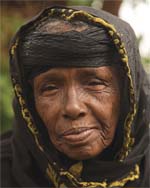3.5 Health risk reduction for non-communicable diseases
Both the chain of infection and communicable disease models are helpful in trying to prevent disease caused by an infectious agent. However, these models are not applicable to non-communicable diseases, which include many of the chronic diseases such as heart disease and cancers. Most of these diseases become apparent in people over a period of time and are not caused by a single factor, but by a combination of factors. The concept of ‘caused by many factors’ is often called the multi causation disease model. For example, it is known that heart disease is most likely to be a problem for individuals who are older, who smoke, who do not exercise, who are overweight, who have high blood pressure, who have high blood cholesterol and who have a family history of heart disease.
Note that within the list of factors you have just read there are both modifiable and non-modifiable risk factors. Look at the list again and put an M against the modifiable factors and an NM against the non-modifiable factors.
Individuals who:
- Are older: NM
- Smoke: M
- Do not exercise: M
- Are overweight: M
- Have high blood pressure: M
- Have high cholesterol: M
- Have a family history of heart disease: NM.

According to this model, health education will be useful in risk reduction and disease prevention if you can create programmes that help people control as many of the multi causative risk factors as possible (Figure 3.7).
3.4.2 The communicable disease model
